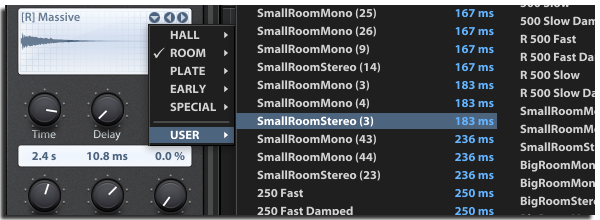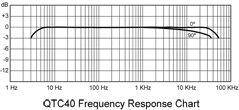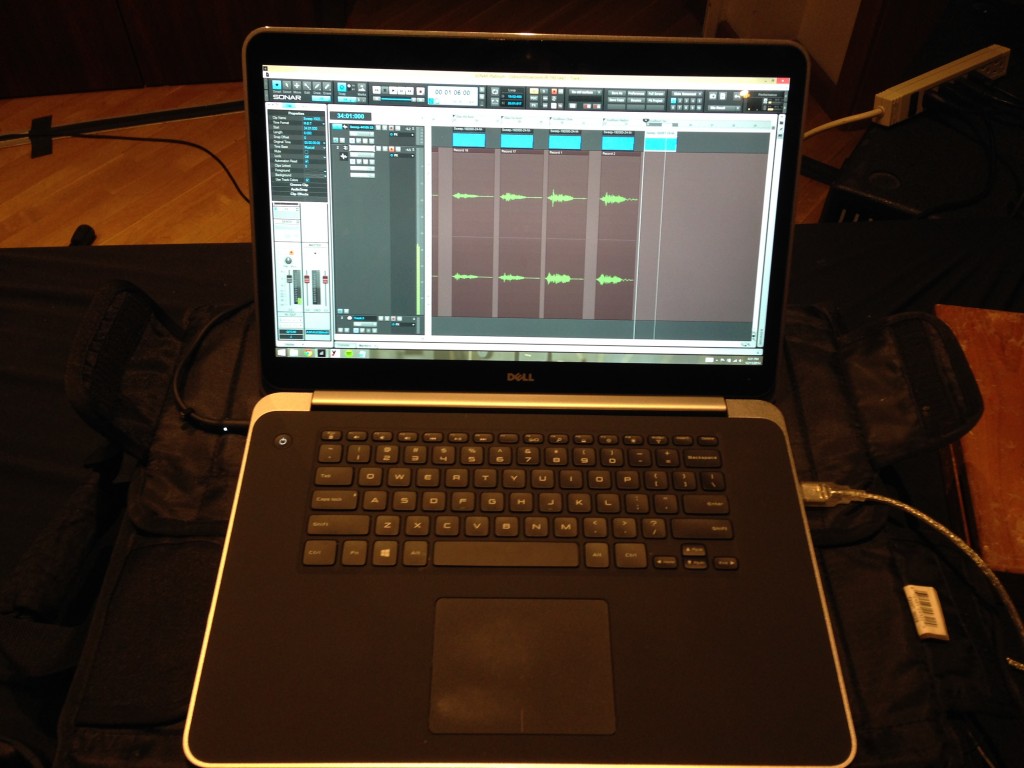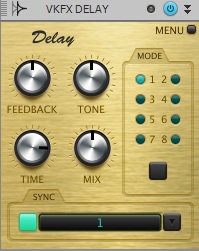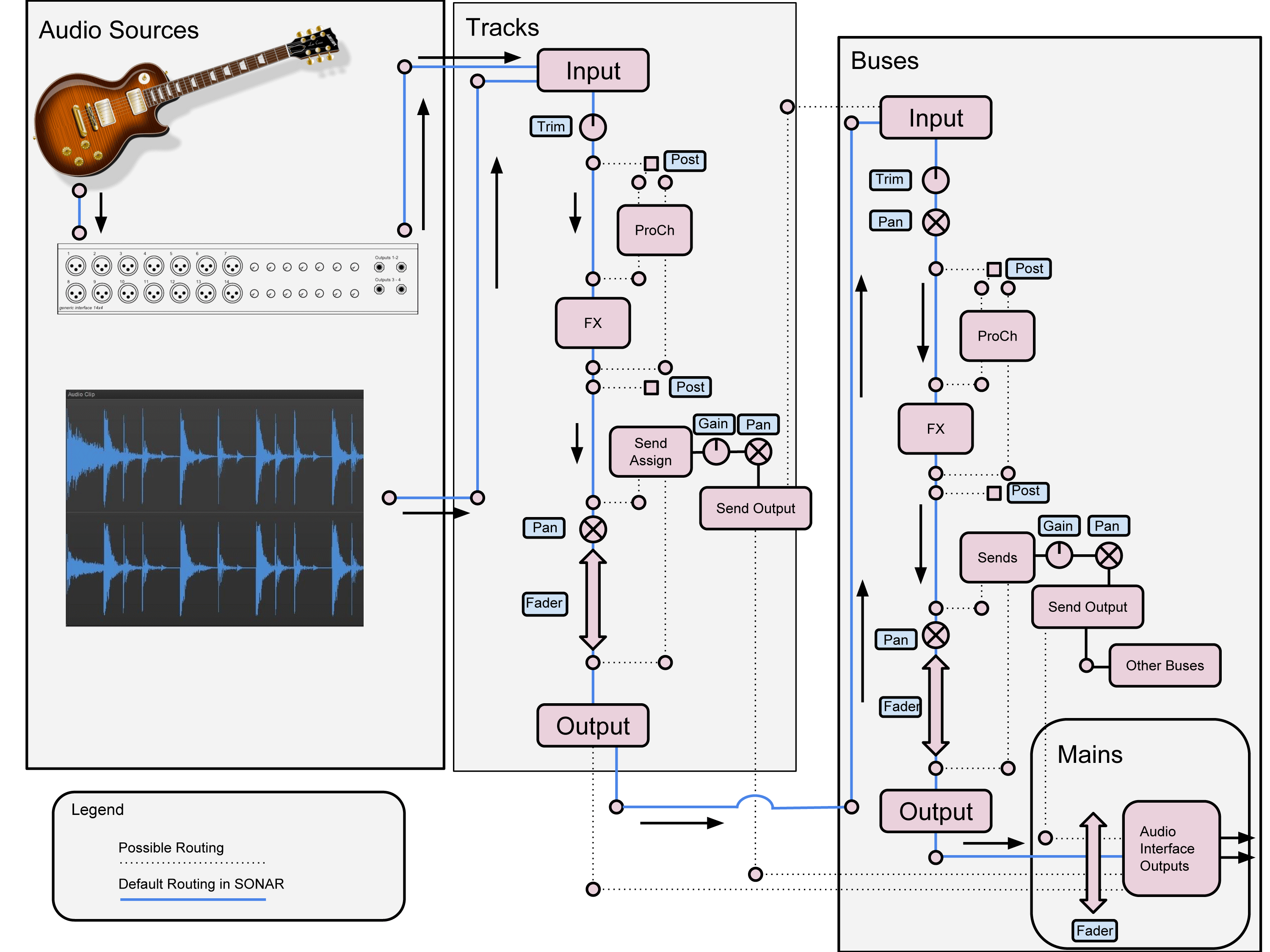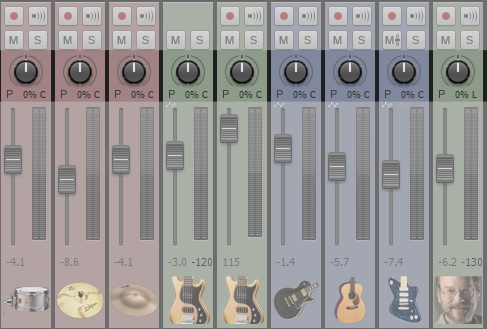by Daniel Gonz
We’d like to release an impulse pack that we created last year in New York City. This free impulse response pack captures the simple ambience of two fantastic live rooms for drums, vocals, and pretty much any acoustic instrument you can imagine. Drop them into your choice of any convolution reverb to add depth to the elements of your mix.
How the new "TH3 Cakewalk" Will Elevate Your Recordings in SONAR

Whether you update SONAR every month or not, this month is a great time to hit the C3 button. Besides the new cutting edge LP mastering plug-ins, we have worked hard and closely with our good friends at Overloud to deliver something that can truly change your sound as a SONAR user. TH3 Cakewalk has arrived and will now replace TH2 moving forward, and I had the opportunity to run the beta for the last month building some basic presets for the plug-in. Right out of the gate I found this VST3 to be a nice upgrade from its predecessor TH2.
Now I am absolutely nothing close to a guitar wizard, but I have been hacking around since I picked up the instrument at age 5, so I’ve been around the block with guitar tones touring, producing, engineering, recording, etc. like a lot of folks probably reading this. From a production standpoint, I’ve always loved the convenience of amp simulators, but always hated what would happen to the tone when trying to mix them together with drums that had been recorded with 1073’s, API’s or other heavy duty pres and mics… the tone gets small pretty fast. In my opinion, this is something that Overloud in general has excelled at—DSP and algorithms that truly stay at the front of the mix no matter what the context. TH3 brings this concept to even another level. Here are some of my quick thoughts and findings.
Sounds
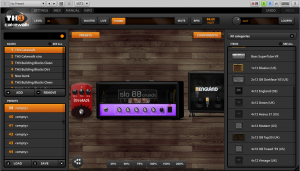 There are a lot of changes with the new TH3 Cakewalk including the new and upgraded User Interface which I will get into, but I bet a lot of folks like me really base their judgments on how things sound. The good news is that once you are up and running with the plug-in you will notice a nice improvement on the sound quality from TH2 Producer/Cakewalk. 5 new amp models with more accurate model reproduction are included in TH3 Cakewalk, and all have improved DSP along with enhanced preamp and power amp stages. To my ear, I notice a more “open and natural” sound in general, but also notice a more responsive relationship between the pick and the strings in terms of “feel”—like when you play a guitar through an amp that just had the tubes replaced. I also notice more presence overall, but the right type of presence without harshness. The low-mids and mids are thick and punchy and I especially love the new Slo88 and Tweed Deluxe amps which have a lot of character. The Bassface is a beast as well; this amp is a secret weapon for many rock producers who use it to double rhythm guitar parts recorded with other amps. Blending these two sources together produces a tone that is about as thick as it gets.
There are a lot of changes with the new TH3 Cakewalk including the new and upgraded User Interface which I will get into, but I bet a lot of folks like me really base their judgments on how things sound. The good news is that once you are up and running with the plug-in you will notice a nice improvement on the sound quality from TH2 Producer/Cakewalk. 5 new amp models with more accurate model reproduction are included in TH3 Cakewalk, and all have improved DSP along with enhanced preamp and power amp stages. To my ear, I notice a more “open and natural” sound in general, but also notice a more responsive relationship between the pick and the strings in terms of “feel”—like when you play a guitar through an amp that just had the tubes replaced. I also notice more presence overall, but the right type of presence without harshness. The low-mids and mids are thick and punchy and I especially love the new Slo88 and Tweed Deluxe amps which have a lot of character. The Bassface is a beast as well; this amp is a secret weapon for many rock producers who use it to double rhythm guitar parts recorded with other amps. Blending these two sources together produces a tone that is about as thick as it gets.
New amps in TH3 Cakewalk:

Bassface 59: Model of a classic american “bass” combo amp, tuned to be great for rhythm and blues playing on guitar once overdriven
Continue reading “How the new "TH3 Cakewalk" Will Elevate Your Recordings in SONAR”
SONAR PLATINUM ADDS Ultra Analog SESSION 2 SYNTH IN 2016.03 UPDATE
 As a fan of our bakers and all the great features coming out of the Rolling Updates, I absolutely love exploring all the new things SONAR brings every month. As a big fan of Lounge Lizard, I was really excited to learn that we would be incorporating the Ultra Analog Session 2 (UAS2) instrument into SONAR this month. So at this year’s Namm convention I made a point of meeting up with my buddy Marc over at Applied Acoustic Systems to learn more about the synth before trying it out.
As a fan of our bakers and all the great features coming out of the Rolling Updates, I absolutely love exploring all the new things SONAR brings every month. As a big fan of Lounge Lizard, I was really excited to learn that we would be incorporating the Ultra Analog Session 2 (UAS2) instrument into SONAR this month. So at this year’s Namm convention I made a point of meeting up with my buddy Marc over at Applied Acoustic Systems to learn more about the synth before trying it out.
“A fun synth to play around with,” Marc explained. And once I got my hands on it I understood what he was talking about. Being a bit underwater with time these days, I decided to put an hour (or so) cap on diving into the synth and writing a short piece of “whatever” inspired me while first hearing and manipulating the sounds; and making use of the features. I challenged myself a bit by using ONLY instances of this synth combined with stock SONAR Producer ProChannel modules so I could get a good feel for its capabilities. I also thought it would be a fun test since there are no stock drum or percussion patches in the synth. Here is what I found:
- Useful: In my book, you can never have enough options when it comes to sounds. I have synths where I only LOVE a few patches but you know what? – Those patches are worth every penny having the synth in my arsenal. I found the UAS2 to have some really great sounding vintage patches. With 7 banks of sounds there are a lot of tones that would come in handy and will work well in certain styles of music. I found combining these sounds with ProChannel shaping to be a great combination for creating some unique sounds.
 Diverse: I like the fact that for a synth with a small footprint, it crosses a through a wide array of tones. The 5 main tonal character traits are Arpeggio, Bass, Lead, Pad, Polysynth, along with a bonus of two banks from Richard and Sean Devine that come in handy for more options. I like the fact that there’s not a ton of overwhelming stuff here—and what’s in the box is all great and diverse for different applications.
Diverse: I like the fact that for a synth with a small footprint, it crosses a through a wide array of tones. The 5 main tonal character traits are Arpeggio, Bass, Lead, Pad, Polysynth, along with a bonus of two banks from Richard and Sean Devine that come in handy for more options. I like the fact that there’s not a ton of overwhelming stuff here—and what’s in the box is all great and diverse for different applications.
- Cool features: I personally love using arpeggiation effects. Admittedly, I love them because I am a horrible keyboard player and they make me sound like I know what I am doing… kind of;) I sometimes use arpeggiation in a way that might be different than some users—I follow no rules of arpeggiation (is that even a word?)—I throw on tons of effects… I let my ears rule both my hands and find notes and things that just sound good to me. I often use this effect on choruses while knocking out all low end to give a song an inconspicuous lift. The “Arpeggio” on this keyboard is cool. It’s simple and straight forward and allows the user to combine a bit of old-school arpeggio tactics along with many syncing options.
 A Strong Simple Synth Engine: For someone like me who is not a synth expert, this instrument is great. The 3 sound generators (VCO, Filter and Amp) are simple enough to navigate for those who do not fully understand the complexities of creating synth patches. In my opinion, 10 minutes of turning knobs with this instrument is enough time for anyone to come up with some great sounds. For example, after putting a limiter on my master bus I noticed one of my staccato parts was cutting through in a way that sounded too intense compared to the kick. Very easily was I able to identify the “Amp Attack” as the culprit, and by simply dialing that knob back a bit the sound became what it needed to be.
A Strong Simple Synth Engine: For someone like me who is not a synth expert, this instrument is great. The 3 sound generators (VCO, Filter and Amp) are simple enough to navigate for those who do not fully understand the complexities of creating synth patches. In my opinion, 10 minutes of turning knobs with this instrument is enough time for anyone to come up with some great sounds. For example, after putting a limiter on my master bus I noticed one of my staccato parts was cutting through in a way that sounded too intense compared to the kick. Very easily was I able to identify the “Amp Attack” as the culprit, and by simply dialing that knob back a bit the sound became what it needed to be.
 Onboard FX: Similar to Z3TA+, this synth carries its own FX processing right inside the synth. Although multiple FX are not possible in one patch, the good news is that AAS didn’t skimp on the quality of the engine. I tested all FX (Chorus, Delay, Distortion, EQ, Flanger, Phaser, Reverb) with different patches and found the available parameters to be intuitive while rendering high-quality sounds.
Onboard FX: Similar to Z3TA+, this synth carries its own FX processing right inside the synth. Although multiple FX are not possible in one patch, the good news is that AAS didn’t skimp on the quality of the engine. I tested all FX (Chorus, Delay, Distortion, EQ, Flanger, Phaser, Reverb) with different patches and found the available parameters to be intuitive while rendering high-quality sounds.
How To Create Easy Tempo Maps in SONAR with Melodyne 4
Thanks to Melodyne’s advanced tempo detection and SONAR’s powerful ARA drag-and-drop integration, your projects can now follow a live recording’s tempo. Simply drag a standard audio clip (or Melodyne region effect) to SONAR’s timeline, and SONAR creates a tempo map that follows the clip tempo. Watch the new video for more information.
Artist Spotlight: Eric Hansen—How He Gets Big Pro Soundinig Results at Home
 “Is it World Music?” “Is it Spanish Music?” “Is this Jazz?” “Is this in the Acoustic Genre?” Fortunately for guitar virtuoso and now-Pro D.I.Y’er Eric Hansen, the simple answer to these questions he faces regularly about his music is, “YES.” Eric is another longtime SONAR user who depends on SONAR daily for his livelihood. He is based out of Southern Florida which might just be where his Spanish and Latin influences come from, where at a young age he had a unique fondness for Flamenco infused Pop music.
“Is it World Music?” “Is it Spanish Music?” “Is this Jazz?” “Is this in the Acoustic Genre?” Fortunately for guitar virtuoso and now-Pro D.I.Y’er Eric Hansen, the simple answer to these questions he faces regularly about his music is, “YES.” Eric is another longtime SONAR user who depends on SONAR daily for his livelihood. He is based out of Southern Florida which might just be where his Spanish and Latin influences come from, where at a young age he had a unique fondness for Flamenco infused Pop music.
Eric began studying the guitar at age 14 and was performing professionally with local rock groups by the age 16. He then attended Florida Atlantic University where he studied Classical and Jazz guitar and was the first actual guitarist to complete the Honors Performance Program at F.A.U. He went on to graduate with academic honors while simultaneously studying Flamenco and Latin American music with musicians from Spain and Peru.
 In his professional career, Eric is no stranger to the Billboard Charts with 6 records under his belt all crafted in different versions of SONAR spanning over 15 years. Eric is in the final stages of another record, but this one is being tracked, mixed and recorded all in SONAR Platinum. After Eric getting Cakewalk an exclusive preview to 3 of the new songs on the record, we were interested in finding out more about how all these great tracks are coming together in Platinum [DEMO PREVIEW]:
In his professional career, Eric is no stranger to the Billboard Charts with 6 records under his belt all crafted in different versions of SONAR spanning over 15 years. Eric is in the final stages of another record, but this one is being tracked, mixed and recorded all in SONAR Platinum. After Eric getting Cakewalk an exclusive preview to 3 of the new songs on the record, we were interested in finding out more about how all these great tracks are coming together in Platinum [DEMO PREVIEW]:
Continue reading “Artist Spotlight: Eric Hansen—How He Gets Big Pro Soundinig Results at Home”
What Windows 10 Means for Music Creators
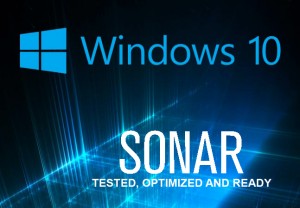 Windows 10 is here, and our trusted code-commanders have been working closely with Microsoft to ensure an enhanced experience for our valued Cakewalk community. Our benchmark testing has shown the new operating system to be very efficient with a lighter footprint. In general, Windows 10 has outperformed Windows 8 in all of our tests in terms of performance and efficiency. Subjectively speaking, the “look and feel” of this free upgrade is a much welcomed improvement over the “Metro” landscape of the previous operating system. But what does this mean for music creators?
Windows 10 is here, and our trusted code-commanders have been working closely with Microsoft to ensure an enhanced experience for our valued Cakewalk community. Our benchmark testing has shown the new operating system to be very efficient with a lighter footprint. In general, Windows 10 has outperformed Windows 8 in all of our tests in terms of performance and efficiency. Subjectively speaking, the “look and feel” of this free upgrade is a much welcomed improvement over the “Metro” landscape of the previous operating system. But what does this mean for music creators?
1.) More responsive: Out of the gate people will notice a much snappier operating system. The tweaks Microsoft made to the kernel and other parts of the OS in general have given it a responsive overhaul.
2.) Upgrade ease: Moving into Windows 10 is a very quick and easy upgrade.
3.) Unified OS: The best elements of Win 7, Win 8, and Win 8.1 have been combined into a streamlined experience with Win 10. Store Apps and Desktop Apps seamlessly run side by side for a smooth universal experience.
4.) New MIDI API available across all devices: The new API allows multi-client access to single MIDI hardware and new jitter-free operation. Microsoft worked hard on bringing this all together for better MIDI implementation.
5.) Enhancements to the kernel: Microsoft has made changes in the multimedia scheduler and kernel components to minimize spikes – this can make a big difference in low-latency streaming apps like SONAR.
6.) FLAC and ALAC Support: Windows 10 has native support for these two codecs. Both “Apple Lossless Audio Codec” and FLAC could mean great things for Windows audio moving forward.
7.) Much faster boot-time: A lower footprint in memory combined with some new optimization techniques will get you up and running and making music faster than ever.
8.) Runs smoother on older machines: The lower memory footprint and optimization tweaks will also allow Win 10 to run more efficiently on older machines. This is great news for Wn 7 users who never upgraded to Win 8.
9.) Lower Latency: 15ms lower roundtrip latency using WASAPI (shared mode).
10.) Core isolation: Drivers and applications can now isolate and dedicate low latency audio processing to a single CPU core. This can minimize the effect of DPC latency spiking from networking, Bluetooth, or other DPC spiking processes by preventing interruptions to audio processing.
At Cakewalk, we are dedicated to staying on the forefront of technology. Our CTO (featured below) and his team worked closely with Microsoft to make sure our products run smoothly on Windows 10. We are very excited about this free update, and highly recommend it to our customers. Try SONAR with Windows 10 today for the ultimate music creation experience.
Making The New York Impulse Pack for the SONAR "Braintree" Release
by Dan Gonzalez
Impulse responses (IRs) are small bursts of audio data that represent the frequency response of a real life space. By using convolution reverbs we can use them creatively in our productions to increase depth and ambience.
The concept
To accurately represent a real life space, you need to excite it with a frequency sweep or a loud sound rich in complex frequencies like a starter pistol or snare drum hit. For my IR samples in the New York Impulse Pack I used a sine sweep. The sine sweep is the easiest way to make sure you get an accurate representation of a space.
Once you capture that space, you must process it with a utility that shortens the
frequency sweep into a state that convolution reverbs can use. Typically this audio data is no more than a split second long.
I used this workflow to produce the Impulse Responses you’ll receive in our content for users that are a part of the Braintree Release for SONAR Platinum and SONAR Professional.
The equipment you’ll need, and what I used
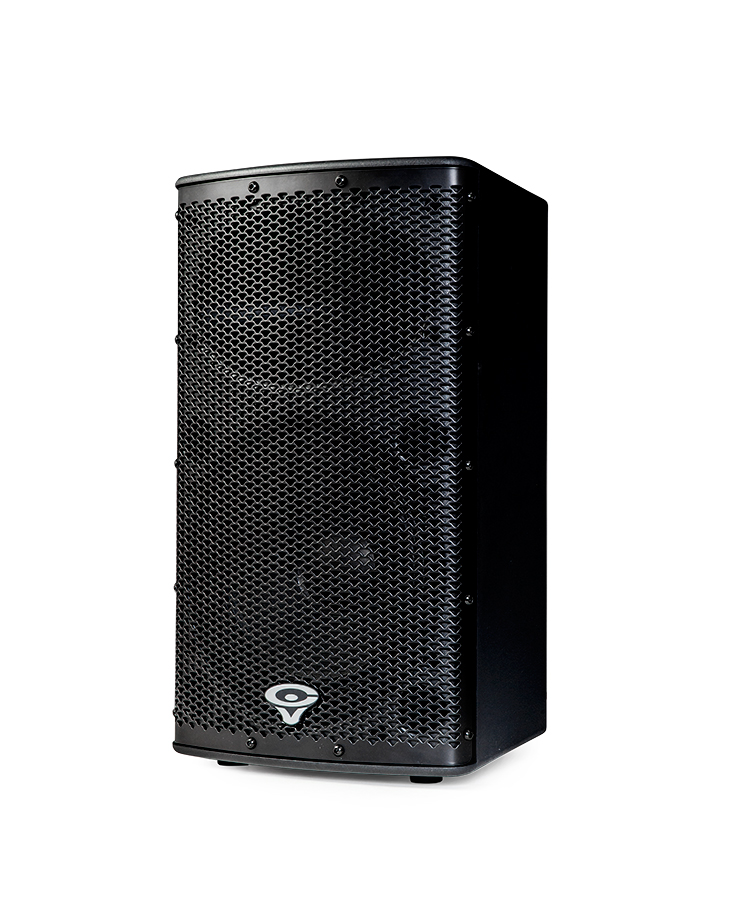
– Speaker, Studio Monitor, or Full Range Flat Response Speaker. I used a Cerwin Vega P1000.
“The P1000X is a two-way, bi-amped, full-range bass-reflex speaker. It employs a 10-inch woofer and a high-frequency compression driver, powered by a custom Class-D amplifier. With a power rating of 1000 watts, the P1000X is one of the most powerful PA product in its class. A proprietary hemi-conical horn provides premium sound clarity over an even and wide coverage area. A built-in mixer with convenient I/O connections allows for simple and fast setup, while Enhanced EQ, VEGA BASS boost and High-Pass Filters enable exact tuning and exceptional performance for any application. The P1000X is a versatile product that can be used as a single speaker for small venues, set in pairs or installed with threaded hang points, and combined with the P1800SX Sub for a larger venue needing more coverage and SPL. Its compact size makes it ideal to operate as a floor monitor as well.”
– Pair of microphones, the flatter response the better. I had the benefit of borrowing a pair of Earthworks QTC40s.
– The ability to create a sine sweep. I used this free utility and then bought the license for $40.
– An audio interface to simultaneously play the sine sweep and capture sound of the excited space. My RME UFX worked out wonderfully because it has very clean preamps and multiple inputs and outputs.
– Of course, SONAR Platinum
The Microphones
The Microphones I used are pretty high-end reference microphones that have a frequency range from 20Hz-40kHz. These are great because they represent the sound of the room without any color. Since we’re in the business of capturing the sound of room – they make a perfect companion for this type of project.
Setting up the spaces
I setup the microphones in a few initial spots to get an idea of how the space sounded. On my first try it was clear that the space was going to sound good no matter where I placed the microphones and the source speaker. Both spaces are not highly reverberant, they just have quality sounding early reflections – which makes them great for getting initial sounds of drums and vocals.
 The goal was to capture the room in various positions. I setup the microphones in close stereo pairs, distant stereo pairs, and subsequently moved the source speaker around them to bounce the sine sweep off different walls. During the processing stage, I then split these stereo IRs out into mono signals so that users could have a choice between stereo or mono processing. For example, here’s a rough diagram of how I setup the microphones in the center with various speaker locations for one set of IRs.
The goal was to capture the room in various positions. I setup the microphones in close stereo pairs, distant stereo pairs, and subsequently moved the source speaker around them to bounce the sine sweep off different walls. During the processing stage, I then split these stereo IRs out into mono signals so that users could have a choice between stereo or mono processing. For example, here’s a rough diagram of how I setup the microphones in the center with various speaker locations for one set of IRs.
The IRs themselves
To excite the space I created a sine sweep with Voxengo Deconvolver.
BE CAREFUL WHEN PLAYING THESE, THEY ARE LOUD
Once the signal played through the room it sounds like this:
Large Room IR Example
Not very exciting on first listen, but when you process the tracks and apply some instruments you start to understand their sound. Here is a drum passage without the impulse response:
Now, here’s the same drum passage with the ambience of one of the “Big Room” IRs that I captured. You can hear how it doesn’t necessarily add reverb, but more an ambience.
Lastly, here’s just the ambience:
Small Room IR Example
Here’s a synth passage without any IRs applied:
Here’s the same patch with one of the SmallRoom IRs applied:
The New SONAR: New Tricks for Drag and Drop
by Dan Gonzalez
There are a lot new things going on inside of the new SONAR Platinum, Professional, and Artist especially in some of the parts of the interface that aren’t so obvious. Did you know that we made some enhancements to our Media Browser and Drag and Drop mechanism? Well, it’s pretty useful stuff – especially for our die-hard users that know and love these workflows.
Export region selections using drag and drop
Within SONAR, you can now select a portion of an audio clip in the track view and drag it to another location on your computer. This nifty trick is great for extracting parts of audio without editing it and exporting.

Drag and drop now renders certain fx
Next up, if you drag audio clips to a destination outside of SONAR, any Clip FX or Clip Gain envelopes will be applied to the clip. Previously we wouldn’t bake any of this into the audio – but now it’s a pretty seamless.

Drag and drop to media browser inherits interleave setting
Drag and drop to the Media Browser now properly exports the expected interleave (mono or stereo) instead of always exporting to a stereo file or multiple mono. Multiple mono files work, but they can be annoying if you want to stick to the way your tracks were meant to be heard. You can see in the snippet below that my stereo audio file is twice the size of it’s mono counterpart. These were exported to the Media Browser using drag and drop.

Media Browser now supports Broadcast Wave Format via Drag and Drop
Drag and drop to the Media Browser now supports Broadcast Wave format so if you’re transferring files from one project to another – they’ll stay true to your timestamp on the timeline.

Copy or Replace Files Using Drag and Drop
Audio and MIDI files can be copied or replaced in the Media Browser via drag and drop using the CTRL modifier. If you drag and drop an auio file to the Browser, SONAR will rename it. But if you hold CTRL while you do this, the file will force the Clip Name that it has inside of SONAR. You can see here how the Clip Name stays as (19) when holding down CTRL.

In addition, if you need to replace the same file in your browser with an update version all you do is hold CTRL while dragging to the Browser.

Wrap Up
Grab your new version of SONAR Platinum, Professional, and Artist and start checking out these new tweaks today. Stay tuned for more about the latest additions to our Skylight Interface and upcoming new features on SONAR’s What’s New page.
ProChannel Convolution Reverb with REmatrix Solo
by Dan Gonzalez
Convolution Reverb, now in the ProChannel
New to SONAR Professional and SONAR Platinum is the increasingly popular and imaginative REmatrix Solo. REmatrix Solo uses convolution to mimic real life halls, rooms, plates, and other reverberant spaces. In order to do this, engineers use something called a sine sweep or starter pistols to excite a real space like a church or bathroom. Typically you need to use a space that has a particularly natural short or long decay and does not have artifacts like flutter verbs or cancelling frequencies. You can even capture the sound of other reverb plugins and import that sound into REmatrix Solo.
This version is based off of a the full REmatrix plugin by Overloud. Currently, REmatrix Solo allows users to play a single IR but in the full version, you can play up to 5 IRs at once – allowing you to cross-pollinate your favorite reverbs into one lush space.
What’s the difference between Breverb and REmatrix Solo
Breverb and REmatrix Solo actually use different technology to create reverb. Breverb is based on a famous digital reverb found in almost every major recording studio. Breverb uses a dedicated or similar algorithm to recreate things like Early Reflections, Late Reflections, Pre-Delay, Decay, and other elements of a reverb. Breverb recreates a digital reverb whereas REmatrix uses the aforementioned convolution methods to convolve passing sounds with data from real life spaces. Breverb lets you tweak the elements of reverb and REmatrix creates a space around your sound.
Here’s a in depth look at the REmatrix Solo plugin brand new to SONAR Professional and SONAR Platinum.
Reader's Choice: The most popular mixing articles of 2014
by Dan Gonzalez
Mixing is and always will be one of the core elements of each and every DAW. Here at Cakewalk, SONAR features hundreds of a ways to mix and process your tracks for personal and commercial use. Here are some of the most popular articles we have featured in 2014.
How to use Reverb to create depth
Mix engineers that have had their time behind a board can pick out the misuse of Reverb when they hear it. Just like with anything, applying the proper Reverb requires more time than just scrolling through the presets of the basic Hall, Room, and Plate algorithms. Music tends to have a significant three-dimensional experience to it. This concept requires the understanding of width, height, and depth. Check out this article on how to use reverb in your mix.
Subtractive EQ Parts 1-5
Equalization is one of the most powerful tools that an audio engineer can get their hands on. Live engineers, post-production engineers, and recording engineers all have their specific uses for it. It’s so powerful that some beginner engineers habitually reach for it without understanding what it can ultimately do to a mix. Check out this 5 part series about how to properly apply EQ
6 creative ways to use the VKFX-Delay
Overloud’s VKFX Delay Module is a rendition of a classic tape delay with an incredible set of parameters that virtually allows you to get just about any sound you please. Check out this frequently read article about how to use this powerful ProChannel module.
Know Your Signal Flow in SONAR
Signal Flow is an important concept to understand, and it may be easier to think about when presented with a diagram of how audio is passes through SONAR. Read the article here.
Ten Nasty Mix Mistakes
Mixing is tough enough as is, but avoiding the following mistakes just might help the process go a little more smoothly—and give you audibly better results. Check out this awesome article by Craig Anderton.
Thanks for reading!


